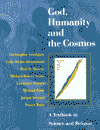The Virginal Conception of JesusThis issue provides an opportunity to compare the work of Arthur Peacocke and John Polkinghorne (see Peacocke and Polkinghorne compared; Peacocke and Polkinghorne: comparison of models of divine action; the question of miracle; and the resurrection of Jesus. Arthur Peacocke is very little disposed to
accept the virginal conception of Jesus. In a careful analysis he points out
how strange it would be if God’s action in the world amounted in this
particular case to supplying a complete set of chromosomes as from a human
father. The old images of God’s relation to living things: the pre-Darwinian
specific designer of creatures (see Darwin’s
challenge to theological positions), the pre-Humean cosmic tinkerer (see
the question of miracle), would return with a vengeance in such a scenario. For
Peacocke ‘it is theologically imperative that the birth stories and the
doctrine of the virginal conception of Jesus be separated from the doctrine of
the incarnation.’ Whereas John Polkinghorne, without
concerning himself too much with the biological details, considers that ‘the dual
origin of the X and Y chromosomes ... seems a possible physical expression of
the belief, in the words of the Nicene creed, that Jesus “by the power of the
Holy Spirit became incarnate of the Virgin Mary and was made man”. In other
words, his conception was an act of divine-human co-operation.’ So two highly-trained scientist-theologians, both pursuing programmes of critical realism in science and theology, reveal how junctures arise when one has to accord one programme, the scientific or the theological, priority over the other. Both thinkers agree that the scientific data necessitate dispensing with an Edenic paradise from which humans ‘fell’ (see the doctrine of the Fall), but they disagree over miracle, empty tomb and virginal conception.
Email
link | Feedback | Contributed by: Dr.
Christopher Southgate |




